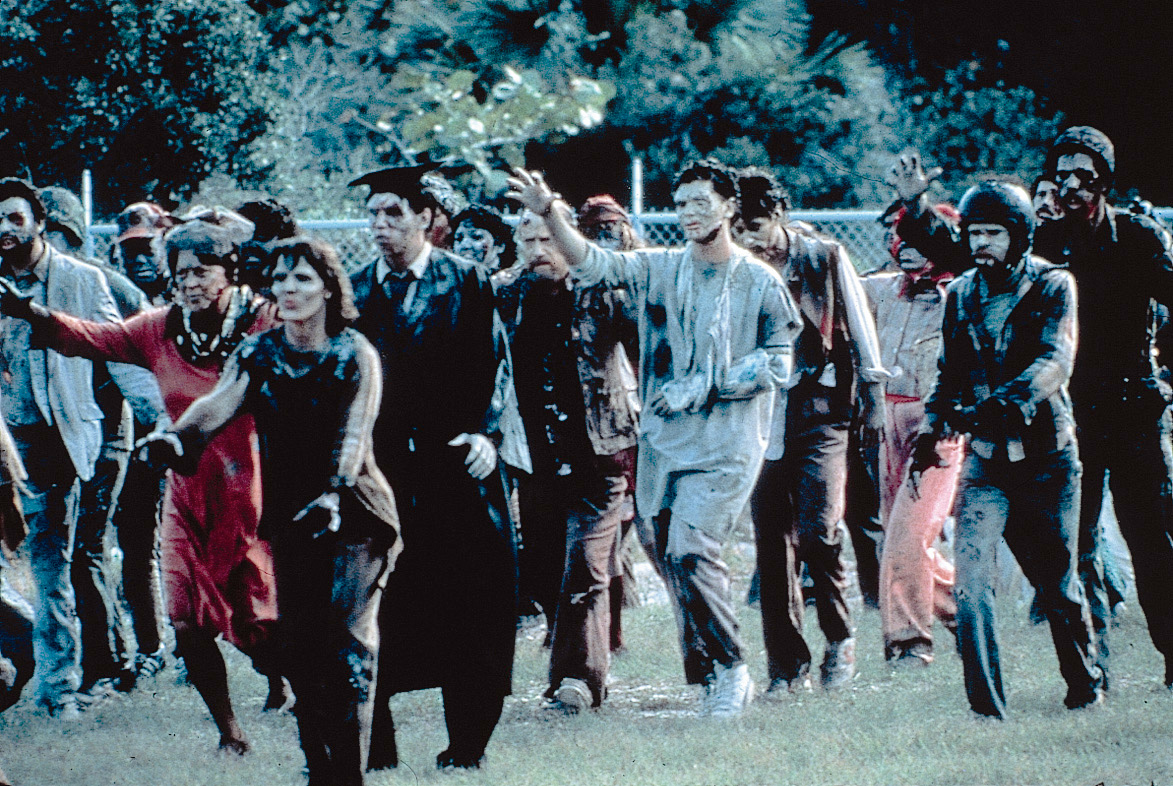The internet has caught the Kon-Mari virus. While the book was already a huge best-seller, nothing is really big these days until it hits Netflix, and the TV series of the Mari Kondo getting people to carefully curate their possessions has got everyone talking, and her name has become a verb: kon-mari. Is it reactionary garbage? While Kondo’s brand of de-hoarding is super specific and not even necessarily minimalist, its certainly caught up in the same trends of #minimalism, tiny houses, and getting rid of all your material possessions so you can put them in a backpack, travel the world and work on your laptop trends. Is this stuff actually a bunch of reactionary nonsense? Is it the aesthetic of the condominium industry? Can poor and working class people afford to get rid of their stuff?
Read moreDenis Villeneuve’s Blade Runner 2049 is the much-anticipated sequel to the 1982 cult film directed by Ridley Scott. Like the original, 2049 is a visually stunning depiction of our potential dystopian future; one that if we read it in its historical context provides for us a detailed cognitive mapping of the continued decline of unfettered multinational capitalism. Also, like the original, the new film provides a surface level portrayal of the world that, if read in spatial terms, maps for us many of the contours of the rhizomatic networks of contemporary capital...
Read moreIn 1970, the famed “New Journalist” Tom Wolfe wrote an article, and later a book, lampooning a dinner party held by the progressive composer Leonard Bernstein for the Black Panther Party. Fresh off of decontextualizing the Merry Pranksters and Bay Area counterculture in Electric Kool Aid Acid Test, Wolfe, a cheeky, fresh-faced conservative, now was on a mission to show the silliness of what was not yet called “identity politics.” Poking fun at the very idea that a member of the BPP would enjoy hors-d’oeuvres; painting one dimensional figures of the Panthers and liberal intelligentsia in one swoop...
Read moreRed Wedge is delighted to share an excerpt from Matthew Flisfeder’s book Postmodern Theory and Blade Runner (2017). The book is part of the Bloomsbury series Film Theory in Practice, edited by Todd McGowan. This excerpt comes from the end of the second chapter.
With a sequel coming up later this year, the time to revalue Blade Runner as a profoundly historical film has come. The film was made during a critical transition point within the history of capitalism.
Read moreGeorge A. Romero is dead. And much as some of us would like it, the director of the most iconic zombie horror films of late capitalism will not be rising from the grave to walk among us. But the ravenous consumption that we see in his creations – of flesh, of our sanity, of our hope for the future – will continue. Unless it is brought to its knees then late capitalism has all but assured this.
The interview below with author and film studies professor Tony Williams – one of the very first articles to appear at Red Wedge – was conducted by editor Adam Turl and appeared on the site in October, 2012.
Read moreI write formal poems because I'm a little weird in the brain, somewhere off the median on the neurodivergence spectrum. A formal poem is a place where I can express or test ideas or feelings or aesthetics without the profound exposure of a public article. Usually what happens when I write a sonnet is a phrase will occur to me that echoes in that meter and I will think about it. Sometimes that phrase is within the first line, and sometimes it is buried deep within the poem. Each of my poems has started with such a seed, uttered by a friend or within my own thoughts.
Somehow in poems or in any sort of art some parts of society find it acceptable to express feelings or beliefs that one cannot express elsewhere. And that is what I do in my poems.
Read moreThere are big changes coming to Red Wedge’s publication and posting schedule. Starting with issue three (out in July) on “The Return of the Crowd," Red Wedge will be going quarterly.
Since the founding of Red Wedge in 2012 there has been a mushrooming and further development of left-wing and explicitly socialist publishing. As readers may know, we have spent much of the past eighteen months discussing our way forward, and feel that our current moment, our current environment, demands that Red Wedge professionalize itself.
Read moreThe comic below is titled "The Flood" and is by Michelle Sayles, an artist and community organizer living in Burlington, VT. You can find more of her work on her blog. – Craig E. Ross
Read morewe've charted the flaming arch
of nitroglycerine stars
dreams that explode against reality
seen dragons emerge from clouds of tear gas
and men in shades of midnight run away
the Street muscle down skyscrapers
in cities perspiring chaos
Read moreThe strong images of the dominant culture offer no way out for the proletarian subject. Likewise the weak images of much of the academic avant-garde offer very little. The solution, for the class-conscious artist, is to connect weakened art and a weakened working-class to universal and totalizing aspirations. In my opinion the strong-weak image is the mode of the popular avant-garde. And historically it has come from outside the art world as often as within it – and sometimes both, in the work of the Wild-Style graffiti innovators of the 1970s and the punk rock DIY posters and zines of the 1970s and 1980s. Raymond Pettibon, highly influenced by William Blake and Goya, was central to the early punk visual aesthetic, producing art for his brother’s band, Black Flag. The tension between “weak” and “strong” inherent to his work was summarized by Pettibon himself when he argued, “I am really asking is for you to look at Gumby with the same kind of respect that you would if it was some historical figure or Greek statue.”
Read more





